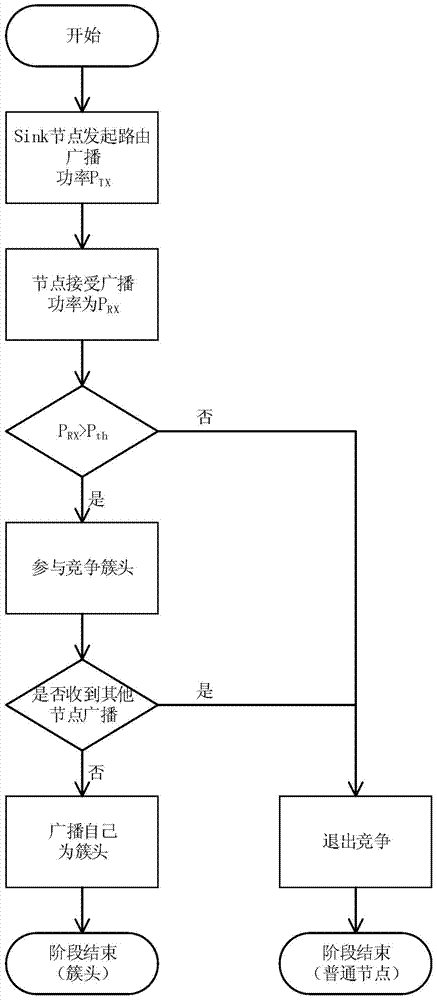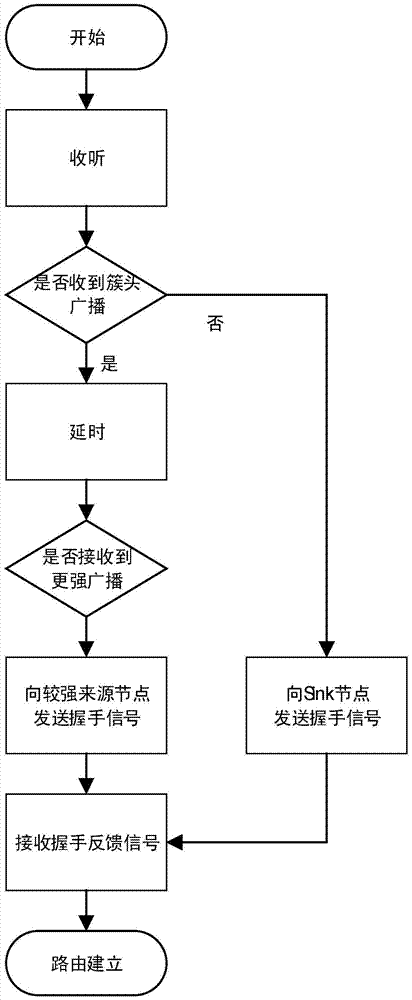A Reliable and Energy-Efficient Hierarchical Routing Implementation for Wireless Body Area Networks or Energy-Constrained Small Wireless Sensor Networks
A wireless sensor network, wireless body area network technology, applied in the field of communication, can solve the problems of uneven energy consumption, low effective utilization of energy, short network life cycle, etc. Effect
- Summary
- Abstract
- Description
- Claims
- Application Information
AI Technical Summary
Problems solved by technology
Method used
Image
Examples
specific Embodiment approach 1
[0050] DETAILED DESCRIPTION OF THE PREFERRED EMBODIMENTS 1. Reliable energy-saving hierarchical routing implementation method for wireless body area network or energy-constrained small wireless sensor network. In wireless body area network or energy-constrained small wireless sensor network, it consists of the following steps accomplish:
[0051] Step 1, initialization: the sink node (sink node) obtains the initial topology structure of the network and the remaining energy information of each node by flooding;
[0052] Each sensor node obtains the hop information and neighboring node information required by its own distance from the sink node;
[0053] After the initialization process is completed, the sink node obtains the topology information of the entire network and the remaining energy information of each sensor node; each sensor node obtains its adjacent nodes and the distance information from the sink node;
[0054] Step 2. The sink node uses the power P TX Broadcast ...
specific Embodiment approach 2
[0066] Embodiment 2. The difference between this embodiment and the method for establishing a reliable and energy-saving hierarchical route for wireless body area network or energy-constrained small wireless sensor network described in Embodiment 1 is that in step 7, cluster removal is performed. After other sensor nodes outside the head receive the broadcast information of the cluster head, they take it as their own parent node, the sensor node joins the cluster, and becomes the child node of the cluster head as follows:
[0067] If the sensor node receives the broadcast information of one cluster head, execute step 71; if the sensor node receives the broadcast information of more than one cluster head, execute step 81;
[0068] Step seventy-one, take the cluster head as its own parent node, and send a signal containing its own node ID information requesting to join, and execute step seventy-two;
[0069] Step 72: After the node serving as the cluster head receives the reques...
specific Embodiment approach 3
[0074] Embodiment 3. The difference between this specific embodiment and the method for establishing a reliable and energy-saving hierarchical route for wireless body area network or energy-constrained small wireless sensor network described in Embodiment 1 is that the wireless Reliable energy-efficient hierarchical routing for body area networks or small energy-constrained wireless sensor networks is maintained by:
[0075] In order to avoid excessive energy consumption of the node serving as the cluster head, the sink node re-broadcasts the updated routing information at regular intervals, and each node re-competes for the cluster head. Competition; if a cluster head node has no child nodes, it still participates in the cluster head competition.
PUM
 Login to View More
Login to View More Abstract
Description
Claims
Application Information
 Login to View More
Login to View More - R&D
- Intellectual Property
- Life Sciences
- Materials
- Tech Scout
- Unparalleled Data Quality
- Higher Quality Content
- 60% Fewer Hallucinations
Browse by: Latest US Patents, China's latest patents, Technical Efficacy Thesaurus, Application Domain, Technology Topic, Popular Technical Reports.
© 2025 PatSnap. All rights reserved.Legal|Privacy policy|Modern Slavery Act Transparency Statement|Sitemap|About US| Contact US: help@patsnap.com



